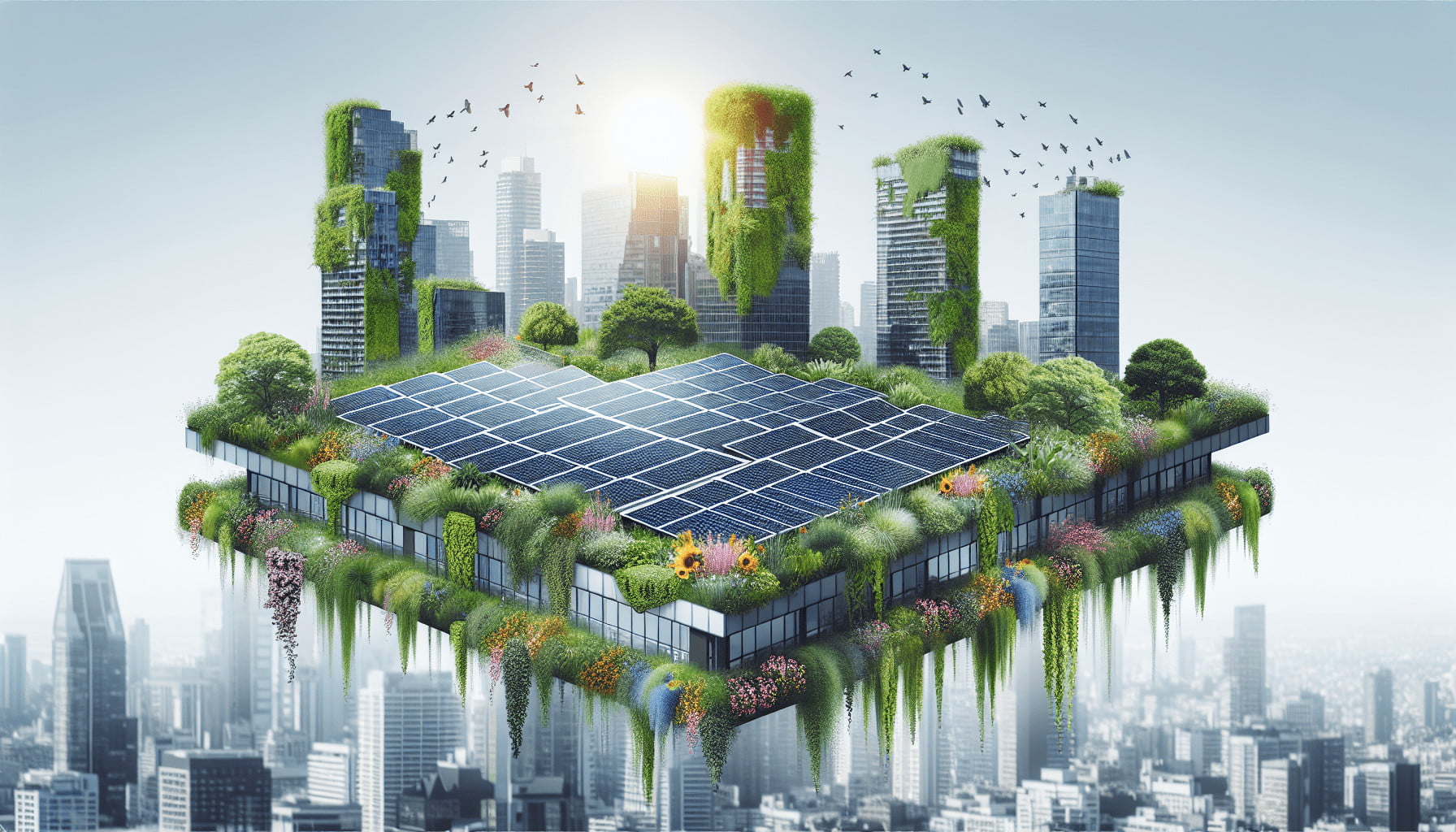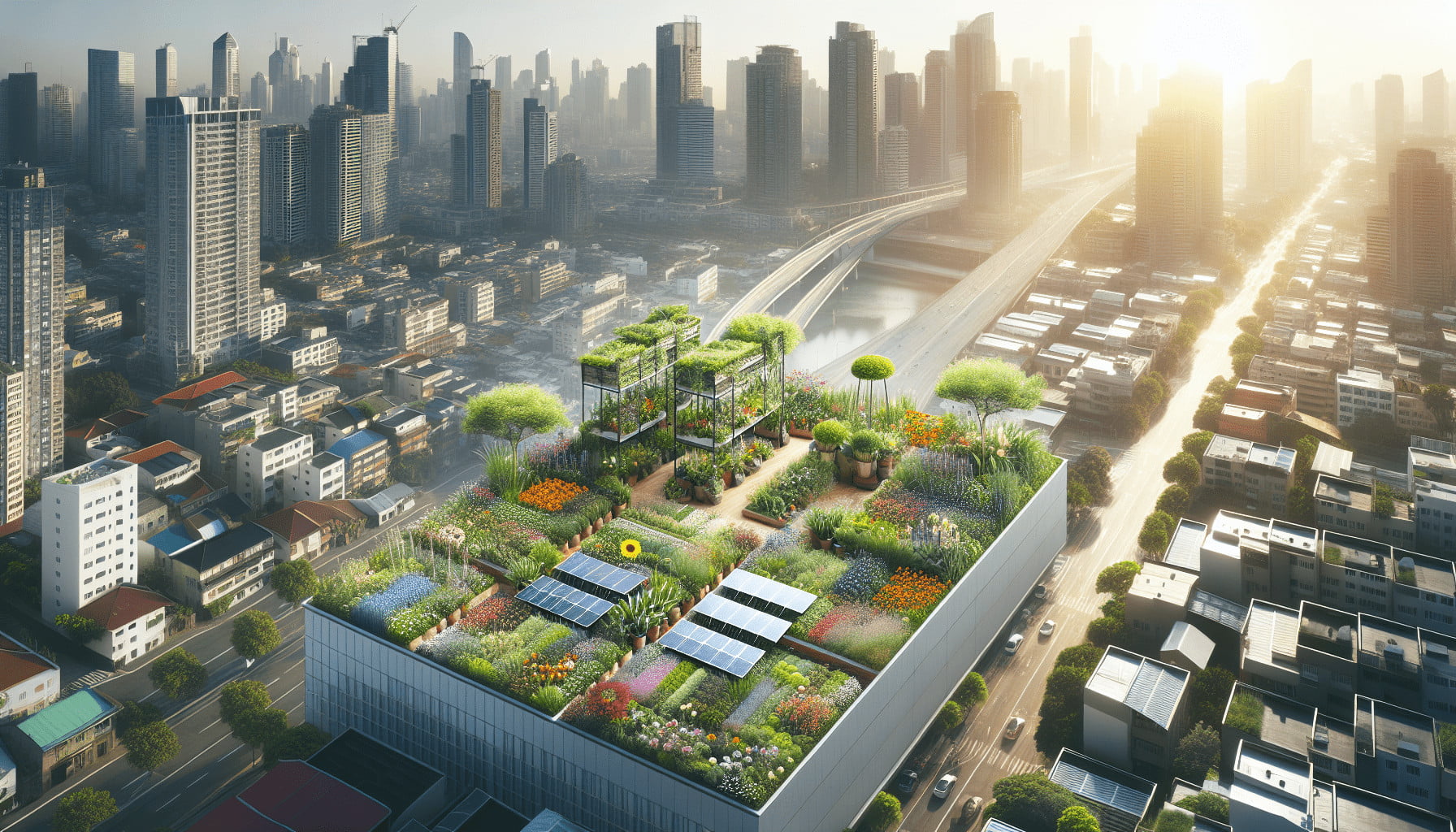Discover the transformative power of green roof systems and how you can seamlessly incorporate them into urban planning. This guide walks you through the essential steps and considerations, from understanding the benefits for sustainability and aesthetic appeal, to planning and implementation strategies. By integrating green roof systems, you’ll help create greener, more resilient cities that improve quality of life and promote environmental stewardship. Have you ever wondered how your city could become greener, cleaner, and more sustainable without expanding its footprint? One of the most innovative solutions today for urban planners is the incorporation of green roof systems into the built environment. Green roofs are not only aesthetically pleasing, but they also offer myriad benefits for cities and their residents.

What Are Green Roof Systems?
Green roof systems, also known as vegetative or eco-roofs, are building rooftops that are partially or completely covered with vegetation. These systems usually consist of several layers, including a waterproofing membrane, a root barrier, a drainage system, and a growing medium (soil) topped with plants. There are two primary types of green roofs: extensive and intensive.
Extensive Green Roofs
Extensive green roofs are lighter, easier to install, and require less maintenance. They typically feature shallow soil layers (2-6 inches) and are planted with drought-tolerant species, such as sedums and mosses.
Intensive Green Roofs
Intensive green roofs are more complex and can support a wider variety of plants, including trees and shrubs. These roofs need deeper soil layers (6 inches or more), more maintenance, and structural support to handle the added weight.
Benefits of Green Roof Systems
Implementing green roof systems brings a wealth of advantages. It’s not just about having more greenery; it’s about integrating sustainability into the heart of the urban environment.
Environmental Benefits
- Heat Island Mitigation: Urban areas tend to be warmer than their rural counterparts, a phenomenon known as the urban heat island effect. Green roofs cool down the environment through evaporative cooling.
- Air Quality Improvement: Plants on green roofs can filter pollutants and CO2 out of the air, leading to fresher and cleaner air.
- Stormwater Management: Green roofs can retain large amounts of rainwater, reducing runoff and easing the burden on drainage systems.
Economic Benefits
- Energy Savings: A green roof can significantly reduce energy costs for heating and cooling, as it acts as an additional layer of insulation.
- Increased Property Value: The aesthetic and environmental benefits increase a property’s value and appeal.
Social Benefits
- Enhanced Beauty and Aesthetics: Green roofs offer visual benefits, enhancing the architectural aesthetics of urban landscapes.
- Public and Private Spaces: Some intensive green roofs can serve as gardens or recreational spaces for urban dwellers.
Steps to Incorporate Green Roof Systems Into Urban Planning
Here’s a detailed guide on how you can incorporate green roof systems into urban planning.
1. Conduct Feasibility Studies
Before any green roof installation, it’s vital to conduct comprehensive feasibility studies. This step involves evaluating the structural capabilities of buildings, assessing climate conditions, and understanding local building codes and regulations.
- Structural Assessment: Determine if the existing roofs can support the additional weight.
- Climate Considerations: Choose plant species that can thrive in the local climate.
- Regulatory Review: Ensure that the project complies with local laws and regulations.
2. Develop Incentive Programs
One way to encourage the adoption of green roofs is by developing incentive programs. These could include tax rebates, grants, and subsidies to reduce the financial burden on building owners.
| Incentive Type | Description |
|---|---|
| Tax Rebates | Offer tax deductions for buildings with green roofs. |
| Grants | Provide financial grants to cover part of the installation costs. |
| Subsidies | Implement subsidies to reduce the cost of green roof materials and labor. |
3. Public Awareness Campaigns
Educate the community about the benefits of green roofs through public awareness campaigns. Use a mix of media platforms to reach a broad audience, and involve community leaders and influencers to spread the message.
4. Set Up Pilot Projects
Pilot projects serve as live examples and can help demonstrate the benefits and feasibility of green roof systems. Choose a few buildings to serve as case studies and monitor the results closely.
5. Collaborate With Experts
Collaborate with architects, engineers, horticulturists, and environmental scientists when planning and designing the green roof systems. Their expertise will be invaluable in ensuring the success of the project.
6. Create Guidelines and Standards
Develop and disseminate guidelines and standards for green roof installation and maintenance. Standardizing the process will make it easier for others to adopt green roof systems.
Components of a Green Roof System
Understanding the basic components of a green roof system is essential for effective implementation. Each layer has a specific function, contributing to the overall performance of the system.
Waterproofing Membrane
A waterproof membrane is crucial to protect the building structure from water infiltration. It forms the first layer on the roof deck.
Root Barrier
The root barrier helps prevent roots from penetrating the waterproof membrane, thus protecting the structural integrity of the building.
Drainage Layer
The drainage layer ensures proper water run-off, preventing waterlogging and ensuring that excess water is directed away from the building.
Filter Mat
The filter mat prevents soil particles from clogging the drainage layer, ensuring efficient water flow.
Growing Medium
The growing medium, often referred to as substrate or soil, is where plants root. The medium must be specially designed to provide adequate drainage and nutrient availability.
Vegetation Layer
This is the top layer that consists of selected plant species. The choice of plants will depend on the type of green roof (extensive or intensive), the local climate, and aesthetic preferences.

Selecting the Right Plants
Choosing the right plants for your green roof is vital for its long-term success. Factors to consider include local climate, roof exposure, maintenance capabilities, and aesthetic preferences.
Climate Adaptation
Plants should be chosen based on their ability to withstand local climate conditions, including temperature ranges, precipitation levels, and wind exposure.
Low Maintenance
Opt for drought-tolerant, low-maintenance plant species, particularly for extensive green roofs. Sedum species, for example, are popular choices because of their resilience and minimal water needs.
Aesthetics
Consider the visual impact. Native species can provide not only ecological benefits but also ensure that the rooftop looks vibrant and seasonal.
Biodiversity
Promote biodiversity by planting a variety of species. This can create a more resilient ecosystem and provide habitats for local wildlife.
Installation Process
Installing a green roof involves several steps, and it is essential to follow each one carefully to ensure the longevity and efficacy of the system.
1. Preparing the Roof
- Clean the Surface: Make sure the roof deck is clean and free from debris.
- Assess the Structure: Confirm that the roof structure can support the additional weight.
2. Installing the Waterproofing Membrane and Root Barrier
- Apply Waterproof Membrane: Ensure it covers the entire roof deck without gaps.
- Install Root Barrier: Put it atop the waterproof membrane to prevent root penetration.
3. Adding the Drainage Layer and Filter Mat
- Lay Down the Drainage Layer: This could be a series of drainage panels or a specialized drainage mat.
- Place the Filter Mat: It should cover the drainage layer to keep soil particulate from clogging the drainage system.
4. Adding the Growing Medium
- Spread the Medium Evenly: Ensure that the depth is consistent across the roof.
- Compress the Soil: Compact lightly to prevent settling.
5. Planting Vegetation
- Establish the Plants: Plant seedlings or install pre-grown vegetation mats.
- Water Generously: Ensure that the plants are well-watered initially to help them establish roots.
Maintenance Practices
A green roof is a living system and requires ongoing maintenance to thrive. Here are some general maintenance practices to follow:
Regular Inspections
Conduct regular inspections to check for any issues such as leaks, drainage problems, or plant health concerns.
Irrigation
Depending on the climate and plant selection, you may need to set up an irrigation system to ensure that your plants receive adequate water.
Fertilization
Apply fertilizers as needed, ensuring that the nutrients in the growing medium are sufficient for plant growth.
Weeding and Pest Control
Remove weeds periodically and manage any pests that may affect plant health.
Overcoming Common Challenges
Integrating green roof systems into urban planning has its set of challenges. However, most of these can be effectively managed with proper planning and foresight.
Initial Costs
While the initial installation cost of green roofs can be high, consider the long-term economic benefits such as reduced energy costs and increased property value. Incentive programs can also offset some of these expenses.
Structural Limitations
Not every building can support a green roof. Conduct thorough structural assessments and collaborate with engineers to determine feasibility.
Maintenance Needs
Green roofs do require maintenance. However, opting for extensive green roofs or engaging professional maintenance services can simplify this task.
Climate Suitability
Plants must be carefully selected to match the local climate conditions. This step is crucial to ensure the sustainability of the green roof system.
Examples of Successful Green Roof Projects
To give you some inspiration, here are notable examples of successful green roof projects from around the world:
Nanyang Technological University, Singapore
Nanyang Technological University features one of the world’s largest green roofs on its School of Art, Design and Media building. The rolling green hills provide excellent insulation and a stunning visual.
The Roof Gardens, London
Located on Kensington High Street, The Roof Gardens in London showcases a lush garden with diverse plant species, water features, and even flamingos!
Chicago City Hall Green Roof
Chicago City Hall’s green roof is a model of urban sustainability. It spans over 20,000 square feet and includes more than 150 different species of plants.
The Future of Green Roof Systems in Urban Areas
With rapid urbanization, the need for innovative solutions like green roofs is more critical than ever. As technology and understanding of green roof systems improve, the future looks promising. Emerging trends include the integration of smart irrigation systems, improved plant varieties, and advanced materials that enhance the longevity and efficiency of green roofs.
Conclusion
Incorporating green roof systems into urban planning is not just a trend; it’s a profound shift toward sustainable living. By understanding the intricacies and benefits of these systems, you can advocate for and implement effective green roofs in your own city. From conducting feasibility studies to selecting the right plants and maintaining the roof, each step is essential for a successful project. With time, green roofs can transform our concrete jungles into thriving ecosystems, offering environmental, economic, and social benefits for all.
So next time you look up at a building, imagine the untapped potential it holds for contributing to a greener, more sustainable future. With the right approach and planning, your city’s rooftops could soon be buzzing with life, energy, and innovation.
